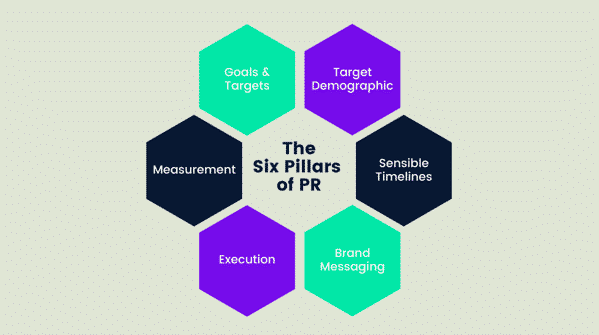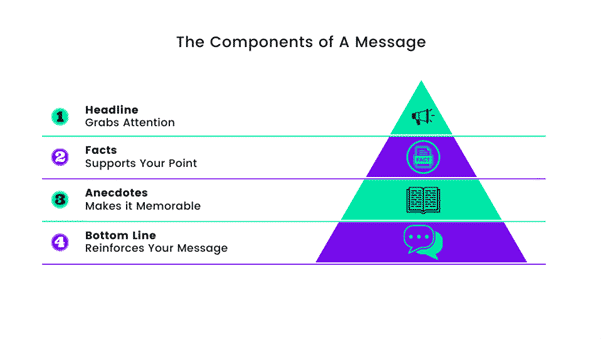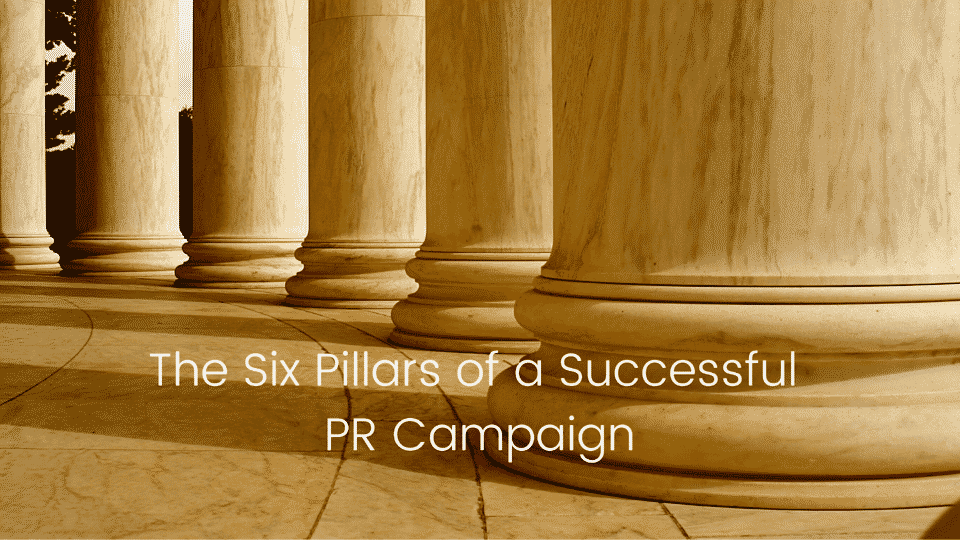If you were to ask ten marketing gurus, “what makes a PR campaign a success?” the chances are you’d receive ten different answers.
The truth of the matter about PR is that no goal or outcome will suit every business, since this depends largely on what a business is looking to achieve and who they have behind the curtain orchestrating the campaign.
In this blog, we’ll be delving behind the scenes to really understand the fundamentals of what it means to make a PR campaign effective by explaining the six pillars of a successful PR campaign.
The Foundations

Any public relations campaign can be characterised as a series of pre-ordained activities and contact with media connections that all come together to help a business expose their brand to a specific type of audience.
At Quibble, we break this down into four basic categories:
- Bloggers and influencers
- Hyper-specific industry news
- Local news outlets
- National news outlets
While no two PR campaigns are the same, each one must be based on these six core pillars:
- Well-defined, crystal clear goals and targets
- A target demographic
- A measurement of success
Pillar #1: Well Defined, Crystal Clear Goals & Targets
Before you jump in at the deep end of your PR campaign, you’ll need to decide precisely what it is you’re looking to achieve.
Whatever you want to accomplish, it’s worth ensuring that these goals closely align with that of the overall business. This means you must remain steadfast to your branding and company mission throughout.
Once you’ve considered your campaign aspirations, start to map out the individual markers that are required to achieve the overall objectives.
This means that while you may have one overall goal, there may be a few different markers that you’d like to hit on the way towards conquering it.
Good examples of the above in action could be:
- “We want to become a household name in our industry in … years’ time.” (overall goal)
- “We’d like to feature in … industry magazines.”(marker)
- “We’d like to achieve …% market share.” (marker)
Before you seal the deal on your goals and desired markers, it’s a good idea to ask yourself if they pass the SMART test.
In other words, are your targets specific, measurable, attainable, relevant, and timely?
If not, then you need to go back to the drawing board.
Pillar #2: A Target Demographic

Once you’ve got a fair idea of what you wish to accomplish, it’s crucial that you find out who will help push you towards achieving them. You should have some idea of the ideal customer within your target demographics already, but it’s still good practice to look for the right audience to aim your campaigns towards anyway.
Even if your goal is relatively small in scope, you must still determine the kinds of publications and methods will eventually become the avenue that’ll you’ll use to reach the right people.
Of course, your audience could end up being as broad as small business owners in the textile industry, or hyper-specific such as males between the ages of 18-25 with an income of over £20,000, living in London and the surrounding areas.
It’s up to you how wide you’d like to set the parameters, but what’s important is to have a clear idea of the audience you want to reach and which publications, news outlets, and social methods you might need to utilise to reach them.
For example, it’s no use tapping up broadsheet newspapers to share your stories and advertise your products, if you’re looking at the 18-25 crowd – in this case, you’d need to think more about viral campaigns and social media.
Pillar #3: Sensible Timelines
Becoming the biggest clothing brand in the country doesn’t happen in 12 months. But, being known for your ethical practices and a commitment to the environment certainly could.
In pillar one, we talked about setting goals and markers, and within this, you set a foundation for a realistic timeline. For any great PR campaign to truly hit the mark, the business behind it takes things up a notch by bringing this timeline to life.
In order to do this, you must define a beginning and an end. Of course, the space in between is really up to you, since it’s all relative to the scope of your overall goal.
The average length for most PR campaigns could be anywhere between a few weeks to years. Again, the formula for this is really up to you, it could last years, so long as you know it will connect with an audience during this time.
The Dove Campaign for Real Beauty is a perfect example of a PR campaign that has spanned years – seven to be exact. The campaign initially started with advertising hoardings asking passers-by, if the women pictured, who had no professional modelling experience, were “Flawed or Flawless?”:

This campaign was one of the first that aimed to use real people to start a conversation about body image, particularly while modern popular media bombards us with images of professional models and athletes with ‘perfect’ bodies.
According to creativebloq, this campaign increased Dove sales from $2 to $4b billion in just three years, and all without advertising a single product; simultaneously engineering a conversation about body image and the way we see ourselves.
Pillar #4: Unmistakable & Consistent Brand Messaging
This is when the real legwork of your campaign begins. Armed with everything you’ve obtained in the previous three pillars, you now need to consider an unmistakable and consistent brand message to show to your audience, no matter which medium you choose to engage with them.
Ask yourself:
- Is there something that our competitors aren’t saying?
- What would help to start a dialogue with our audience?
- How can we educate your audience without pushing the hard sell?
To do this, you need to think about how your product or service solves a problem and build outward from this central point.

A great example of this in action is Sky’s Ocean Rescue campaign. Although the campaign doesn’t promote Sky’s usual digital services, due to its branding and messaging it is unmistakable as a Sky campaign.

Image from Sky
This campaign has managed to so far raise £25million worth of investment to plastic alternatives, has removed 300 tonnes of plastic from the ocean, created 400km2 of protected ocean alongside partners WWF, and has reached 47.8m people who are now aware of the campaign to #PassOnPlastic.
While this campaign is designed to create awareness, it’s also done wonders for the Sky brand, which has previously drawn criticism for its close associations with the Murdoch media empire, and has encouraged celebrities such as Sienna Miller, Harry Kane and Cara Delevingne, to raise awareness of the cause.
Pillar #5: Campaign Execution
This is the action phase of your campaign. This will look slightly different for every campaign you undertake, but broadly speaking, this phase will often consist of:
- Press releases
- Media coverage
- Press conferences
- Events
- Product endorsements
- Product launches
- Strategic advertising
- Crisis management
As you work out how your campaign will be structured, you’ll begin to form an idea of what it may evolve into. For example, if you look at the graphic below from Visual.ly, you’ll see a selection of PR campaigns from previous decades and how they were promoted.
You’ll notice that as each campaign evolves, their method of promotion comes about quite organically:

See the full infographic here>
Pillar #6: A Measurement of Success
Once you’re able to pat yourself on the back after your event, media coverage, or product launch, you’ll reach a point where you must take a measurement of your success.
In this pillar, you’ll need to reflect on what worked, what didn’t, and whether or not you actually managed to hit your goals and markers.
If you followed the SMART test we mentioned earlier, then your goals and markers should be easy to evaluate from a success point of view. First, measure your activities and efforts to determine if you were able to achieve what you set out to do.
If you managed to achieve everything you wanted, how can you repeat the process and ride the momentum wave? If you didn’t, what went wrong? Where did you notice things were starting to slip? No matter what happens in the end, every day is a school day, so if nothing else you’ve learned something valuable.
Takeaways
With any successful PR campaign, there is no room to cut corners.
Taking time out to thoughtfully plot each of the six pillars above will give you every opportunity to create something that stands head and shoulders above the competition.
As with all marketing endeavours, you must start with a strong foundation and build from the ground up.
At Quibble, some of our PR campaigns have been featured in some huge publications, such as the New York Times, Information Age, Preloved, The Times and much more.
If you have any questions about PR or would like to know more about any of our other services, please get in touch with our team of experts.

